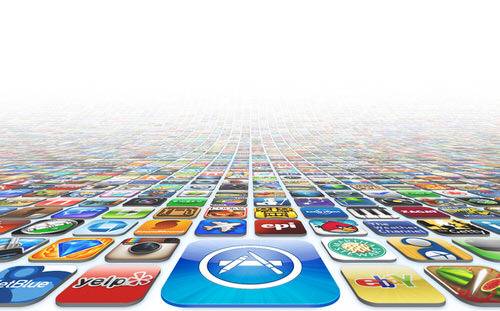
The word “app” has become ingrained into the global lexicon of software development. As time has passed and technology has evolved, people have viewed software from progressively different perspectives. Microsoft Office is a piece of software—yet so is a video game. And so is PayPal, for that matter.
As Marc Andreessen, cofounder of venture capital firm Andreessen Horowitz, eloquently puts it, “Software is eating the world.”
But as software rises, we use the term less and less. Andreesssen’s statement, meant to describe how software companies are disrupting entire industries and challenging the norm, is best manifested in the proliferation of apps. In 2013, we’ve been inundated with the concept of apps—on smartphones, tablets and laptops, of course, but also more unusual domains like cars and refrigerators.
The term’s newfound ubiquity raises an interesting point about how we perceive the software that now surrounds us. What exactly is an “app”? When did a package of code meant to execute a function stop being a “program” or a “piece of software”? And is there a difference that goes deeper than a linguistic fad?
Software Is Old And Busted, Apps Are The New Hotness
Prior to the proliferation of mobile devices, downloading software and experimenting with new programs was left primarily to tech-savvy individuals. Consider the painstaking process of finding a free video editor, a music-sharing program prior to iTunes, or a task-management application. Not many people bothered.
With the emergence of app stores, everyday people are constantly interacting with software, judging its value, and installing and deleting apps on their devices at a rapid pace.
Consider the evolution of gaming thanks to mobile. The term “video games” brings to mind teenage males playing Xbox or PlayStation titles on their parents’ basements. Yet in 2013, the majority of social gamers are female and over 40 years old—and they play through something that’s called an “app,” whether it’s on Facebook or a mobile device, that they’ve chosen to install.
Not only has the perception of software changed, but the user base has evolved drastically. We’ve seen a gradual shift in older demographics embracing consumer technology, creating dramatic upticks in software creation, selection, and usage. Such trends are directly tied to the ubiquity of software in today’s society.
The Consumerization of Software
Ease-of-use and user experience are directly connected to mobile apps. One of the most valuable aspects of an app, as compared to software of yesteryear, is the focus on usability, resulting in reduced learning curves and faster overall adoption and mastery.
Non-techies and dedicated gadget junkies alike are finding use in everyday apps. The fact that ordinary people now interact with software and technology for hours every day results in a public that is increasingly technology-literate.
To see an example of how our jargon and understanding of software has evolved, take a look at a Google Trends report comparing the popularity of the terms “software,” “program,” and “app.” Searches for “app” have steadily risen up from almost nothing, while searches for the words “software” and “program” have stagnated or dropped over time.
What Lies Ahead
In the past 10 years, apps have significantly influenced the IT industry. Back in 2003, if a client requested an “app,” it was most likely an enterprise application or website. In 2008, apps might have been widgets on a smart TV or a feature on a kiosk. Now that the word “app” has evolved into an entirely new beast.
As our developers continue to master present-day technology, it is exciting to consider what our team will be working on in 2023. How will the world view apps in 2023? In what devices will apps be in 10 years? And will we still call them “apps”—or will we have invented an entirely new word by then?
Devanshi Garg is the COO of Icreon Tech, a New York-based software-development firm.

















